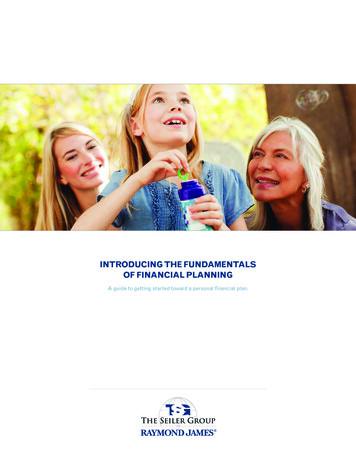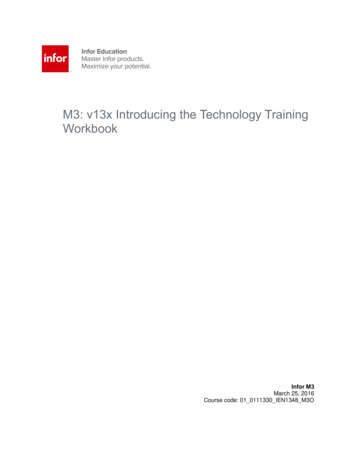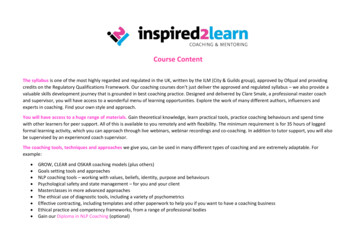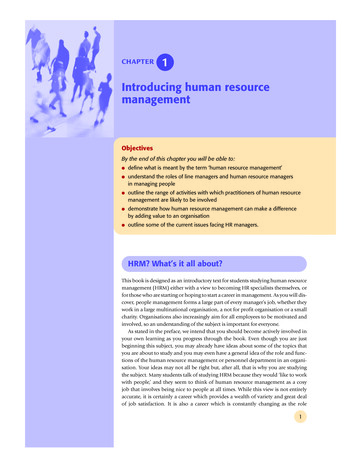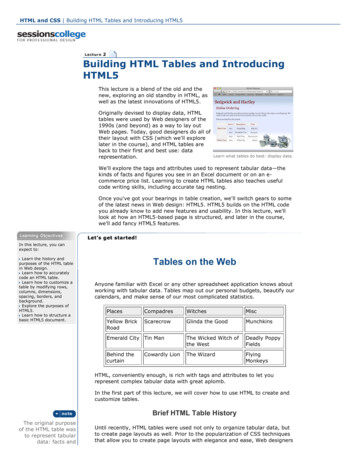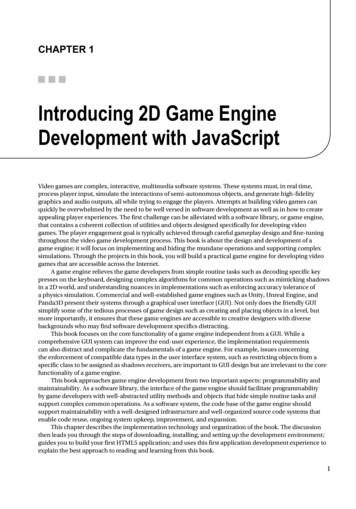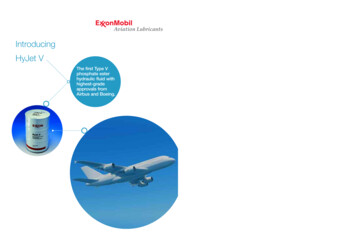
Transcription
IntroducingHyJet VThe first Type Vphosphate esterhydraulic fluid withhighest-gradeapprovals fromAirbus and Boeing.
HyJet V fire-resistant Type V hydraulic fluid offerswear and corrosion protection and long service lifeto meet demanding industry needs.HyJet V performance will help ensure the reliabilityof your fleet’s hydraulic systems.Better Wear ProtectionHyJet V from ExxonMobil is a new fire-resistant Type V phosphateester hydraulic fluid. It is our response to the commercial aviationindustry’s request for a product with better thermal and hydrolyticstability, and longer service life than Type IV hydraulic fluids. Lessprone to degradation, HyJet V can be replenished less frequently,potentially reducing maintenance and disposal costs.HyJet V is fully compatible with all approved Type IV and Type Vhydraulic fluids. It is also compatible with elastomers, cleaningsolvents, paints and other hydraulic system materials.Our product provides the advantages that you would expect froma global supplier with a long-standing reputation for leadership inaviation lubricant technology.If you are looking for a hydraulic fluid that offersmixed fleets the highest level of performance,convert your equipment to HyJet V.Four Ball Wear TestWear Scar in mm after one hour at 600 rpm, 75 C, and force as shown0.900.800.70HyJet V offers: 0.60better wear protection than competitive Type IV andType V hydraulic fluids,mmHyJet V is the first Type V fluid authorized foruse in the Airbus A380’s 5000-psi hydraulicsystem.The Four Ball Wear Test (ASTM D 4172) determines the lubricity andwear protection properties of a lubricant. The test is used in Airbusand Boeing Phosphate Ester Aircraft Hydraulic Fluid Specifications.Three steel bearing balls are clamped together and covered withthe test fluid, while a rotating fourth ball is pressed against them insliding contact at various force levels. This contact produces a wearscar, which is measured and recorded. The smaller the averagewear scar, the better the lubricant’s wear protection.0.500.400.30better stability and longer service life than Type IVhydraulic fluids, and0.200.10stronger corrosion control than competitive Type IV andType V hydraulic fluids.0.00HyJet VCompetitiveType V4 kg*1-gallon can(6-gallon cansper carton)5-gallon pail(metal)10 kgCompetitive CompetitiveType IVType IV40 kgThe Four Ball Wear Test (ASTM D 4172) produced generally smallerscars for HyJet V than for samples of other Type IV and Type Vcommercial products.* The difference in wear protection performancebetween HyJet V and the competitive Type V product was especiallypronounced. Better performance in this test can mean better wearprotection for a fleet’s hydraulic system components.HyJet Vis availableglobally in thefollowingpackagestyles:1-quart can(24-quart cansper carton)HyJetIV-Aplus55-gallon drumResults are averages from testing samples from multiple batches ofHyJet V and other commercial products.
Reaction with water at elevated temperaturesis the dominant cause of degradation forphosphate ester hydraulic fluids. This isbecause the fluids rapidly absorb water fromthe atmosphere. The reaction produces acids,which can damage elastomers and etch metalsurfaces. When a fluid’s acid control additive isfully depleted, acid levels increase quickly andmay harm hydraulic system components.The Airbus NSA 307110 Ampoule Test(see chart to the right) confirmed that HyJet Voffers better stability and longer service lifethan Type IV fluids.Stronger Corrosion ControlHyJet V Specifications and ApprovalsHydraulic Fluid Life Type IV vs. Type VAmpoule Test @ 0.5% Water, 125 CSAE Aerospace Standard AS1241, Type VAirbus NSA 307110M, Type VBoeing BMS 3-11N Type V, Grade ABoeing-Long Beach DMS 2014H Type 5Bombardier BAMS 654-003NC, Type VATR NSA 307110M, Type V7Acid Number, mg KOH/gLonger Service Life6HyJet V1240 hrs5HyJet IV-Aplus565 hrs4OtherType IVs3OEM In-ServiceMax Limit21002505007501000125015001750Time, HoursThe Airbus NSA 307110 Ampoule Test measures a fluid’s resistance toreaction with water (hydrolytic stability) and molecular breakdown at hightemperatures (thermal stability). Fluid is tested at regular intervals todetermine when it exceeds a 1.5 acid number, signifying the end of fluidlife. Side-by-side testing confirmed that HyJet V offers better stability andlonger service life than Type IV fluids.Rust Protection Comparison by ASTM D 665A Other Type IVFluids HyJet IV-Aplus Water in concentrations of approximately onepercent is soluble in hydraulic fluid and not acause for rust-related concerns. However, ifthe fluid does not have powerful rust inhibitors,water in concentrations of three percent ormore can cause rapid and severe damage tothe equipment. The photos (see right) confirmthat HyJet V provides a measure of securityagainst potentially damaging high-level watercontamination that is better than competitiveType IV and Type V hydraulic fluids. While dissolved water in a phosphate esterhydraulic fluid does not cause rust, theseparated water phase can cause rapidcorrosion of ferrous parts.HyJet VOtherType VFluidThe ASTM D 665A test identifies rust on polished steel rods that havebeen exposed to 10 percent water in fluid for 24 hours at 60 C.HyJet V combats corrosion better than competitive Type IV and Type Vhydraulic fluids.MeetsXXXXXXIn Qualified Products ListNot ApplicableXXXXXTypical PropertiesTest MethodASTM D 445Kinematic Viscosity, cStat -53.9ºC (-65ºF)at 37.8ºC (100ºF)at 98.9ºC (210ºF)Viscosity IndexASTM D 2270Shear Stability, % Viscosity Drop at 40ºCASTM D 5621Pour Point, ºC (ºF)ASTM D 97Specific Gravity at 25ºC/25ºC (77ºF/77ºF)ASTM D 4052ASTM D 4052Density at 15.6ºC (60ºF), g/mL (lb/gal)Acid Number, mg KOH/gASTM D 974ASTM D 6304Water, Karl Fischer, mass %FlammabilityFlash Point, ºC (ºF)ASTM D 92Fire Point, ºC (ºF)ASTM D 92Autoignition Point, ºC (ºF)ASTM D 2155ASTM D 892Foaming Tendency/Stability, mL foam/sec to collapseSequence ISequence IISequence IIIAuto CounterParticle Count, NAS 1638 ClassChemical Elements, ppmCalciumPotassiumChlorineSodiumSulfurElectrical Conductivity at 20ºC, microSiemens/cmBulk Modulus, Isothermal secant at 100ºF/3000 psi, psiThermal Conductivity at 40ºC, cal/sec/cm2/ºC (Btu/hr/ft2/ºF)Coefficient of Thermal Expansion, 25 to 100ºC, per ºC (per ºF)Specific Heat Capacity at 40ºC, cal/g/ºC (same as Btu/lb/ºF)(1)Values may vary within modest rangesHyJet V (1)Limits135010.83.732021 -62 (-80)0.9971.003 (8.37)0.050.12000 max10.0 - 11.03.35 - 3.75174 (346)185 (365) 427 (800)160 (320) min177 (350) min400 (752) min10/1010/1010/105250/100 max150/50 max450/250 max7 max73885500.4210,00033 x 10 -5 (0.0799)0.00086 (0.00048)0.4220 max48 max50 max15 max200 max0.3 min-62 (-80) max0.993 -1.0050.1 max0.2 max
Following good storage and handling practiceswill help to keep HyJet V and your fleet’s hydraulicsystems working reliably.Following relatively simple storage and handling practices can makea significant difference in terms of safety, the quality of the lubricantsyou use, and the reliability of your fleet’s hydraulic systems. Bystoring and handling HyJet V properly, you can help to ensure thatit will not deteriorate as a result of contamination or exposure toextreme temperatures.ExxonMobil continually invests in researchingand developing new lubricant technology toensure we meet the changing needs of ouraviation customers. Store HyJet V indoors. Minimize the time product containers are open to avoidcontamination by dust or moisture from air. Keep dispensing equipment clean and dry. Coverequipment when not in use.The shelf life of an unopened container of HyJet V is five years fordrums and pails and 10 years for quarts and gallon cans, if it hasbeen stored properly.Based on available toxicological information, HyJet V is not expectedto produce adverse effects on health when used and handledproperly.Your ExxonMobil Aviation Lubricants sales representative canprovide you with additional detailed information on how to properlystore and handle HyJet V.To learn more about HyJet V, pleasecontact your local ExxonMobil AviationLubricants representative, or visitwww.exxonmobil.com/lubes/aviation.The Material Safety Data Sheet (MSDS)for HyJet V shares information on useand handling, as well as health and safetyinformation. You can find the MSDS onlineat www.exxonmobil.com/lubes.
ExxonMobil Aviation Lubricants 2008 Exxon Mobil Corporation3225 Gallows RoadFairfax, Virginia 22037-0001The ExxonMobil logotype, Mobil and HyJetare trademarks of Exxon Mobil Corporationor one of its subsidiaries.Nothing in this material is intended to overridethe corporate separateness of local entities.The terms corporation, company, affiliate,ExxonMobil, Exxon, Mobil, Esso, our, we andits, as used in this material may refer to ExxonMobil Corporation, to one of its divisions, or tothe companies affiliated with Exxon MobilCorporation, or to any one or more of theforegoing. The shorter terms are used merelyfor convenience and simplicity.Printed in U.S.A.EMAL-HJV-808www.exxonmobil.com
ExxonMobil, Exxon, Mobil, Esso, our, we and its, as used in this material may refer to Exxon Mobil Corporation, to one of its divisions, or to the companies affiliated with Exxon Mobil Corporation, or to any one or more of the foregoing. The shorter terms are used merely for convenience and simplicity. Printed in U.S.A. ExxonMobil Aviation .


